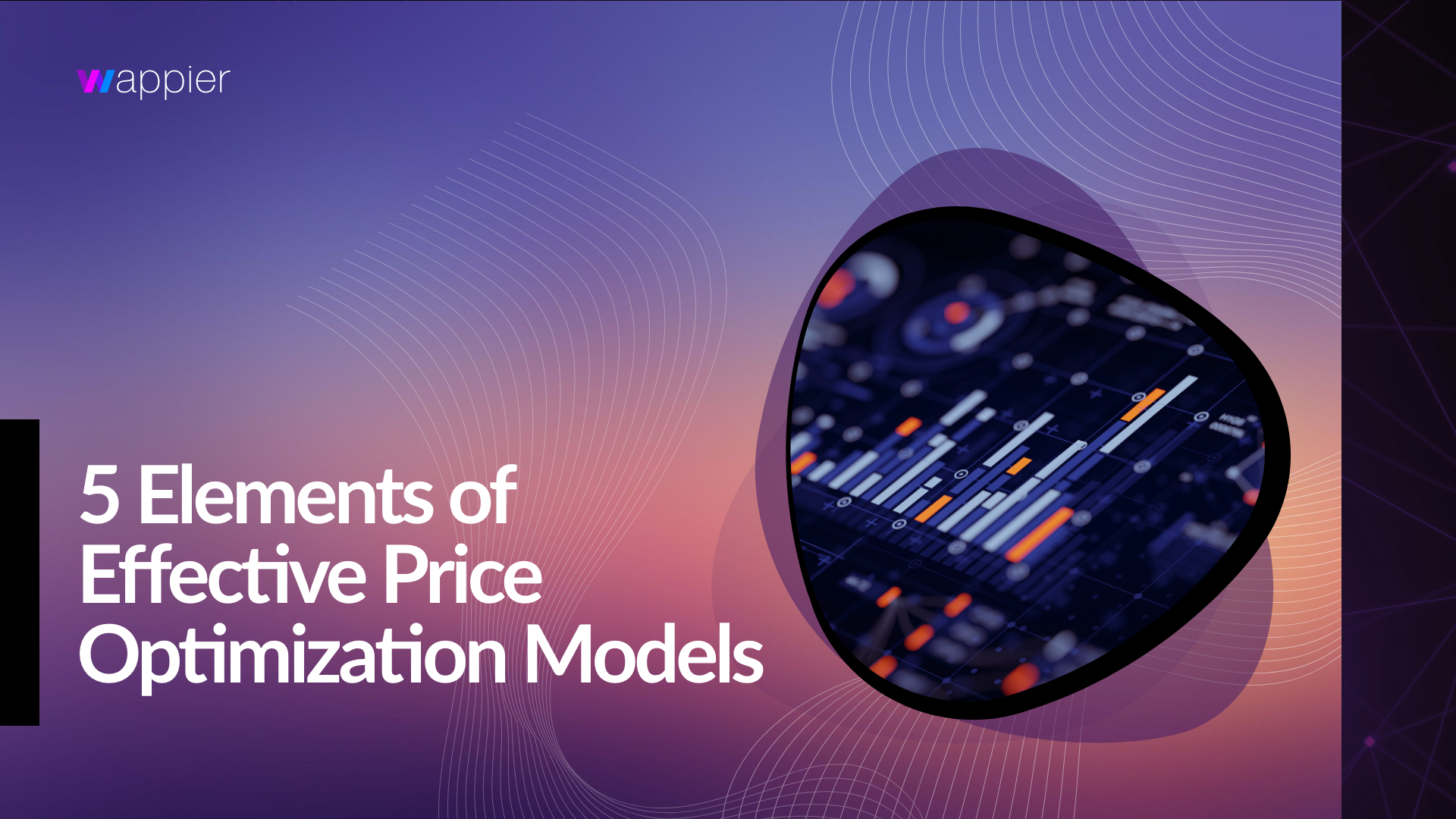The countless factors that contribute to consumers’ purchase decisions are constantly in flux. From individual behaviors and concerns to social and economic trends, IAP pricing needs to be highly flexible. Building effective price optimization models doesn’t just increase revenue and support your specific business goals, it also provides personally relevant experiences to new and existing customers all over the world. Here are the five elements all mobile app developers should incorporate into their price optimization models.
Jump to a section…
Orientation Around Specific Business Goals
Qualitative and Quantitative Data Analysis
Best Practices and Industry Standards
Behavioral Economics and Psychology
Interested in learning how wappier’s machine learning-powered price optimization models drive revenue for mobile app developers? Get in touch.
#1: Orientation Around Specific Business Goals
What are your company’s goals beyond increasing profit? For effective pricing optimization, you need to attune your model to the specific business metrics you’re looking to impact. Examples of these kinds of goals include increasing average customer lifetime value, improving customer retention, and growing customer acquisition. Taking them into account will ensure that your pricing optimization model moves the needle for your business in the ways that matter in addition to increasing revenue more generally.
#2: Qualitative and Quantitative Data Analysis
Effective price optimization models base their decisions on real data. Consider both qualitative data gleaned from customers about their experiences with your app and quantitative data that will help you better understand who your customer is and what they’ll find most valuable.
Qualitative Data
To collect useful qualitative data, take the time to connect with your consumers. Ask for reviews, conduct surveys, and find ways to invite real feedback from the people who use your mobile app. Hearing from customers of all kinds — from loyal big spenders to dedicated low-value users — will help you better understand how your app is being perceived by the people who play it most. Publishing positive feedback will also provide the kind of social influence that encourages customers to make purchases.
Quantitative Data
Most successful price optimization models are focused primarily on quantitative data. User data is critically important, and can include device information, geo-location, engagement level, and past purchase history. At the same time, your model should also take into account the bigger picture of economic, social, and cultural events. Consider micro- and macro-economics trends, statistics specific to your industry, and temporal elements like seasonality. Your model should also analyze competitor data and inflationary pricing fluctuations happening within your market segment.
#3: Best Practices and Industry Standards
IAP price optimization models should rely on best practices and industry standards as a starting point. In the mobile games world, industry standard pricing dictates that single-use items should cost $0.99. While price optimization models shouldn’t necessarily blindly follow that standard, it’s an important benchmark. Regardless of the actual value of the item being sold, when customers encounter pricing that is outside their expectations they are likely to make assumptions about what value that item will provide them in the game.
#4: Behavioral Economics and Psychology
Effective price optimization models also take into account your customers’ psychology. There are countless subtle factors that influence consumers’ purchase decisions, and using behavior and psychology to influence pricing decisions is a great way to ensure you meet your players where they are. Use your price optimization model to identify the right IAP bundles and set decoy pricing that encourages consumers to buy.
For example, offering a small selection of IAP options side by side (including single and bundled items) is a good way to create the perception of increased value at higher tiers. Encouraging comparison between primary and decoy offers can help players feel justified and assured in making a purchase. But offer too many options, and consumers may struggle to identify not only which item they desire but also which will offer them the greatest value. Introducing that kind of friction to the customer journey makes it less likely players will make IAPs at all.
#5: Machine Learning Automation
Optimizing pricing at this level is virtually impossible through manual processes. Machine learning supports effective price optimization models by supporting huge quantities of data and multiple variables ranging from user-level details to the global scale big picture. One of the primary benefits of price optimization models powered by machine learning technology is the ability to evolve over time.
Because machine learning models can learn from their own progress, they get better and better at identifying the ideal pricing that leads players to purchase in any given moment or market. Price elasticity calculations, trend forecasting, and both big swings and fine-tuning changes are all made possible by pricing optimization machine learning tools.
Mobile game developers must implement effective price optimization models in order to make offering IAP a worthwhile model. That’s why wappier’s pricing optimization models use AI and machine learning technology to help mobile game companies meet their monetization goals. Ready to learn more about how wappier can help you drive in-app revenue growth? Contact us today.






